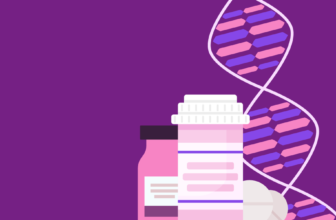
With everyone from healthcare providers to influencers weighing in on the best ways to live longer, it’s hard to separate fact from fiction. Most of us know eating garden-to-table is good for our health, but to what degree? Are there certain foods scientifically proven to increase your lifespan? Enter blue zone eating — a plant-based diet rich in complex carbohydrates that researchers say can help you live to 100 years old.
This may sound like the next installment of “Avatar,” but “blue zones” refer to five identified communities on our planet where people have fewer health issues and live longer. It’s perfectly normal for a person in these regions to live past 100 years. In contrast, the average American only lives for 78 years.
The blue zone diet is mostly made up of whole grains, fruits, legumes and vegetables. Coffee, green and black teas and eggs are also in.
What’s out? Most dairy (goat and sheep milk make the cut, as do cheeses like feta and pecorino), meat (only on special occasions), sugar and — you guessed it — processed foods.
Here are five staples of the blue zone diet that science says promotes healthy aging:
2. Chickpeas
Chickpeas are so much more than the beans responsible for your favorite hummus. Packed with protein and nutrients, chickpeas are heart-healthy beans with a slightly nutty kick. To give you an idea of how they rank on the superfood scale, one cooked cup of the khaki-colored beans has 14.5 grams of protein and 12.5 grams of fiber. That fiber makes you feel full longer and aids in weight management. They are also a rich source of vitamin B9, or folic acid, which is better consumed in foods as opposed to supplements.
Try sprinkling chickpeas into a salad or an easy salad roll-up. Of course, you can always whip up your own red pepper hummus or test drive the chocolate version you’ve been eyeing at Trader Joe’s.
3. Quinoa
While there’s some debate over how to pronounce it, there’s no disputing the health benefits of quinoa. For starters, it’s a complete protein, supplying our body with essential amino acids it can’t produce on its own. Cardiovascular disease is the No. 1 killer of women in the United States, so natural foods high in magnesium that regulate blood sugar, blood pressure and your heartbeats per minute should be a staple. Quinoa also supports strong bones and cell functions, protecting the brain and heart.
You can swap out any recipe that calls for rice with quinoa. Beyond stir fry and side dishes, think sushi, tacos and burritos. Craving something sweet? Try this quinoa spin on peanut brittle.
4. Avocado
What can’t avocados do? (Your laundry, maybe). The popular vegetable that gave us yet another reason to love breakfast is high in protein and boasts almost 20 vitamins and minerals. They also have monounsaturated fat, the good, heart-healthy kind of fat our bodies need to stay healthy.
Elevate your average pico de gallo with avocado and corn, or add an egg on whole-grain toast with goat cheese and chives or pear and honey. Want to achieve a creamy consistency in your smoothie? Throw some of the green stuff in your blender.
5. Honey
The blue zone diet includes no more than seven teaspoons of added sugar to your daily diet and making honey your go-to sweetener. Added sugar affects our immune system, making it harder to stave off diseases, and puts us at risk for diabetes. Sugar crashes also affect our mental health. Why honey? First of all, it’s a natural sweetener , and it’s a powerful remedy against allergies when purchased locally. Honey is a slow pour, so your ability to manage your intake is much easier.
Beyond sweetening your morning coffee or tea, honey is a great alternative to white sugar in baking. Honey mint lemonade sounds perfectly refreshing as the temps heat up. For those who enjoy sweet and savory things, chile-infused honey sounds like a perfect pairing.
Related Articles Around the Web
Credit : Source Post






